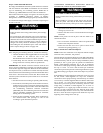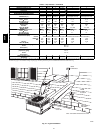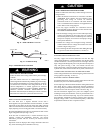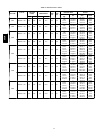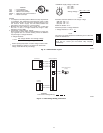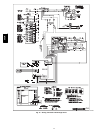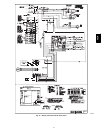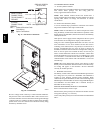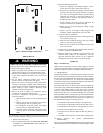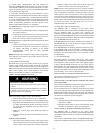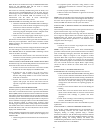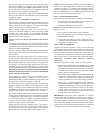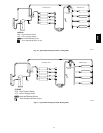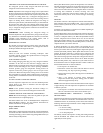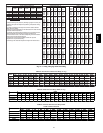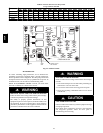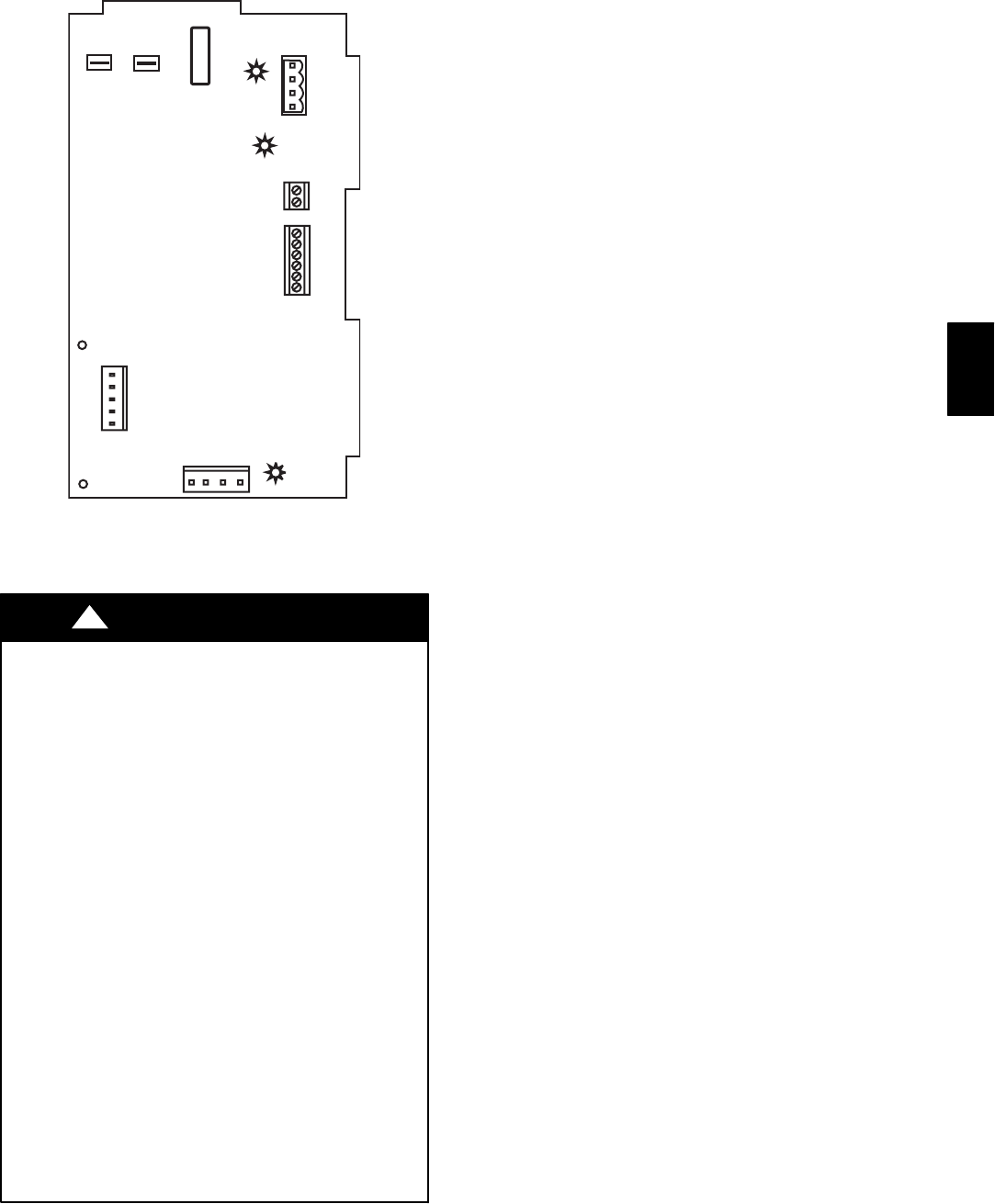
17
SEC-2 SEC-1
F1
5
HK38EA002
ABCD
1
COMM
1
1
OAT
HUM C W O Y R
HEATER
1
MOTOR
STATUS
A03169
Fig. 19 -- Detail of Printed Circuit Board
PRE--START-- UP
FIRE,EXPLOSION,ELECTRICALSHOCKHAZARD
Failure to follow this warning could result in personal injury
or death and/or property damage.
1. Follow recognized safety practices and wear protective
goggles when checking or servicing refrigerant system.
2. Do not operate compressor or provide any electric power
to unit unless compressor terminal cover is in place and
secured.
3. Do not remove compressor terminal cover until all
electrical sources are disconnected and tagged.
4. Relieve and recover all refrigerant from system before
touching or disturbing anything inside terminal box if
refrigerant leak is suspected around compressorterminals.
5. Never attempt to repair soldered connection while
refrigerant system is under pressure.
6. Do not use torch to remove any component. System
contains oil and refrigerant under pressure.
7. To remove a component, wear protective goggles and
proceed as follows:
a. Shut offelectricalpowerto unit and installlockout
tag.
b. Relieve and reclaim all refrigerant from system
using both high-- and low--pressure ports.
c. Cut component connecting tubing with tubing
cutter and remove component from unit.
d. Carefully unsweat remaining tubing stubs when
necessary. Oil can ignite when exposed to torch
flame.
!
WARNING
Use the Start--Up Checklist supplied at the end of this book and
proceedasfollowsto inspectandpreparetheunitforinitialstart--up:
1. Remove all access panels.
2. ReadandfollowinstructionsonallDANGER,WARNING,
CAUTION, and INFORMATION labels attached to, or
shipped with unit.
3. Make the following inspections:
a. Inspect for shipping and handling damages, such as
broken lines, loose parts, disconnected wires, etc.
b. Inspectforoilatallrefrigeranttubingconnectionsandon
unit base. Detecting oil generally indicates a refrigerant
leak. Leak test all refrigerant tubing connections using
electronic leak detector, or liquid--soap solution. If a
refrigerant leak is detected, see following Check for
Refrigerant Leaks section.
c. Inspect all field-- and factory--wiring connections. Be
sure that connections are completed and tight.
d. Ensure wires do not touch refrigerant tubing or sharp
sheet metal edges.
e. Inspect coil fins. If damaged during shipping and
handling, carefully straighten finswith a fin comb.
4. Verify the following conditions:
a. Make sure that outdoor fan blade is correctly positioned
in fan orifice (See Fig. 24).
b. Make sure that condensate drain pan and trap are filled
with water to ensure proper drainage.
c. Make sure that all tools and miscellaneous loose parts
have been removed.
5. Compressors are internally spring mounted. Do not loosen
or remove compressor holddown bolts.
6. EachunitsystemhastwoSchrader-- typeports,onelow--side
Schrader fitting located on the suction line, and one
high--side Schrader fitting located on the compressor
discharge line. Besure that caps on the ports are tight.
START-- UP
Step 1—Unit Start--Up
NOTE: Always check high -- and low --voltage supply to the unit
components.Checktheintegrity oftheplugreceptacleconnections
and unit wiring harness prior to assuming a component failure.
A. LED Description:
LEDsbuilt into Infinityt controlboardprovideinstallerorservice
person information concerning operation and/or fault condition of
theunitcontroland ECM motor.Thisinformation is also available
at the system user interface in text with basic troubleshooting
instructions. Careful use of information displayed will reduce the
need for extensive manual troubleshooting.
The amber LED located at bottom center of control adjacent to
motor harness plug is MotorStatus LED and it is labeled MOTOR.
A second amber LED located in upper right center of control
adjacent to System Communications connector (A,B,C,D) is the
System Status LED and it is l abeled STATUS. The green LED
labeled COMMisalsolocatedadjacenttoSystem Communications
connector, below STATUS LED, and is used as an indicator of
system communications status. Status Codes will be displayed on
the STATUS LED using the following protocol:
1. The number of short flashes indicates first digit of code.
2. The number of long flashes indicates second digit of code.
3. Ashortflashis0.25secondson.Alongflash is1secondon.
4. The time between flashes is 0.25 seconds.
5. The time between last short flash and first long flash is 1
second.
6. The LED will be off for 2.5 seconds before repeating code.
B. Control Start--Up and System Communications
Troubleshooting:
Onpowerup,greenCOMMLEDwillbe turnedoffuntilsuccessful
system communications areestablished (thisshould happenwithin
50CR



